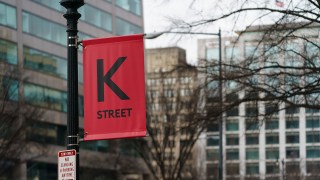China COVID lockdowns threaten higher prices in US
Lockdowns in China are ravaging global supply chains as shipping containers pile up at ports and factories close their doors.
Beijing’s aggressive action to curb the spread of COVID-19 is likely to further fuel inflation in the U.S., where companies are struggling to get products from their Chinese suppliers.
“The prolonged lockdown in Shanghai plus highway controls in a number of provinces have been severely disrupting logistics in China. The central government is now trying to balance minimizing disruption against controlling the latest wave of Covid infections, but the disruption is likely to last for weeks and will weigh on activity in April and into May, if not longer,” Tommy Wu, lead China economist at Oxford Economics, wrote in a research note.
“Industrial production and exports will be affected and likely to have a significant impact on global supply chains.”
Shanghai, China’s most populous city, is entering its fourth week of severe lockdowns in which residents are unable to leave their homes and restrictions are limiting workers’ ability to process incoming and outgoing shipping containers. Several regions are facing similar restraints that have led to massive bottlenecks.
Nearly one-fourth of the world’s stalled container ships are waiting outside of Chinese ports, according to data provided by maritime intelligence firm Windward AI. In total, 412 vessels were stuck just outside of China over the weekend, down 19 percent from the peak late last month but up 58 percent from February.
Hundreds of thousands of American companies rely on Chinese suppliers whose operations have slowed to a crawl. The U.S. imports roughly 20 percent of all goods and 35 percent of electronics from China.
Chinese supply chain snags will impact U.S. supply of electronics, apparel, furniture, plastic items and raw materials, potentially driving up prices for a wide array of products. Higher transportation costs stemming from the slowdown are also likely to pass on to consumers.
Experts expect U.S. consumers to experience a shortage of Apple products this year after several of the tech giant’s Chinese partners, including iPhone supplier Foxconn, were forced to shut down their factories in recent weeks due to COVID-19 outbreaks.
Tesla and other multinational companies with factories in Shanghai have worked with authorities to restart production by implementing a “closed-loop system” in which employees don’t leave the factory until restrictions are lifted. But those agreements aren’t widespread, and they come after weeks of inactivity.
“China is just the linchpin for what so much of the world relies on, especially around technology manufacturing,” said Jennifer Bisceglie, CEO of Interos, a supply chain risk management firm. “Unfortunately, the lockdowns in Shanghai and Beijing will likely affect semiconductors, which will impact everything from the phones we use to the automobiles we buy to the toys we play with.”
The price of used cars and trucks in the U.S. soared 35 percent over the last 12 months as semiconductor shortages forced production cutbacks and the nation’s supply of vehicles failed to keep pace with robust demand. Overall consumer prices rose 8.5 percent annually, the highest rate of increase in four decades.
Lockdowns across China have been one of myriad supply chain issues pushing prices higher across the globe, but especially within the U.S. When consumer demand rebounded sharply last year, prices for manufactured goods shot up as suppliers struggled to keep up amid shortages, shutdowns and shipping delays.
Diana Furchtgott-Roth, adjunct professor of economics at George Washington University, said there are four main ways supply snarls in China force companies to charge higher prices: lost sales from seasonal or perishable items caught in delays; lower revenue from late deliveries; the need to maintain bigger inventories; and the costs of preparing for unfilled or canceled orders.
“There’s one- or two- or three-week delays for disruption of exports, and then there’s also a one-week quarantine for goods to enter China. So that means that big manufacturers that use supplies from elsewhere, such as chips from South Korea, are finding that their operations are disrupted too,” she said.
On Monday, Chinese officials announced that parts of Beijing will undergo lockdowns and mass testing to curb the spread of COVID-19 in the capital city. Experts say the move could further slow the transport of goods and drive global prices higher as residents rush to stock up on food and essential supplies.
The latest action in China to snuff out COVID-19 cases is threatening to add even more pressure to inflation as the Federal Reserve sprints to prevent prices from spiraling out of control.
“I think that you’re going to see major shortages as we continue to break off whole parts of the supply chain, given the impact of the Russia-Ukraine crisis and the rolling shutdowns in China,” Bisceglie said.
Even if Shanghai and other regions end their lockdowns and port bottlenecks subside, the massive surge of ships traveling back to the U.S. is sure to cause traffic jams.
Shelley Simpson, chief commercial officer of Arkansas-based freight giant J.B. Hunt Transport Services, said on an earnings call Thursday that port congestion in China will likely cause bottlenecks at West Coast ports by July.
“If you actually look at the live screenshot of what’s happening in Shanghai, it looks just like a lot of ships and a little bit of water,” she told investors. “And so that certainly is going to make its way back into the U.S. here this summer.”
Copyright 2024 Nexstar Media Inc. All rights reserved. This material may not be published, broadcast, rewritten, or redistributed..











